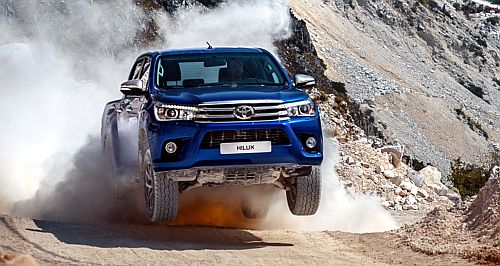Make / Model Search
News - Market Insight - Market Insight 2024Market Insight: New car price rises comparedPrices across all segments have increased with averages up 19.5 per cent in five years2 Sep 2024 By MATT BROGAN NEW-VEHICLE prices are climbing almost with each passing month as importers work to cover the costs associated with doing business.
Increased transportation costs are a key driver of price increases rolled into the manufacturer’s recommended list price, as are burgeoning real estate costs at both the point of storage and on the forecourt.
For purchasers, these costs come on top of growing economic pressures amid Australia’s cost-of-living crisis; the price of buying and operating a vehicle the second-highest out-of-pocket expense behind housing, be that home loan repayments and rent.
To find out just where prices have increased, we look to the R J Pound pricing guide, finding an average upswing of 19.5 per cent across Australia’s seven most popular vehicle segments.
For comparison, we have taken the average base price of the two most popular-selling models across each market segment over the period and at the end of each calendar year (and to August this year).
Though the sample may appear small, it is important to focus on make, model and variant types that have not undergone significant change in the five years studied. This ensures an accurate insight into prices before and since the COVID-19 pandemic.
Across the light passenger car segment, average prices have risen from $15,480 to $25,375 – or 39.0 per cent – since 2019. Markers for the segment include the Mazda 2 and Toyota Yaris, which have increased by an average of $9895 across the period, by far the largest market segment increase across the sector in percentage terms.
Australia’s popular small passenger car segment – represented in this case by the strong-selling Hyundai i30 and Toyota Corolla – has witnessed a more modest price increase, with averages rising from $21,662 to $26,635 across the five-year period, or 18.7 per cent.
Medium passenger car prices rose by the second-lowest integer on our table, up 12.7 per cent since pre-pandemic times. Price increases based on the Mazda 6 and Toyota Camry show averages rising from $31,140 to $35,670 since December 2019.
With large-segment cars falling from popularity, we have skipped ahead to the bustling small SUV segment. As one of the most important drivers of new car sales, the segment saw price increases of 24.5 per cent across the measured timeframe, or a rise from $25,490 to $33,740 – based here upon the Mitsubishi ASX and Toyota C-HR.
Toyota again drove sales in the medium SUV between 2019 and 2024, competing alongside the Mazda CX-5 to propel prices up from an average of $30,935 to $38,175 – an increase of 19.0 per cent.
Large SUV segment entrants jumped by a lesser step from $47,170 to $54,330 across the five-year period, or an increase of 13.2 per cent based on Ford’s Everest and Toyota’s Kluger.
Interestingly, and perhaps in saving the best new to last, we note the lowest five-year new car price increase coming from Australia’s most popular vehicle segment – the four-wheel drive utility.
Based on pricing of the Ford Ranger and Toyota HiLux, Australia’s best-selling vehicles over the period, we find an average price rise from $40,177 to $44,472 – or a relatively modest 9.7 per cent.
Five-year price increases across popular market segments*:
*Pricing data courtesy R J Pound.  |
Click to shareMarket Insight articlesResearch Market Insight Motor industry news |









Facebook Twitter Instagram